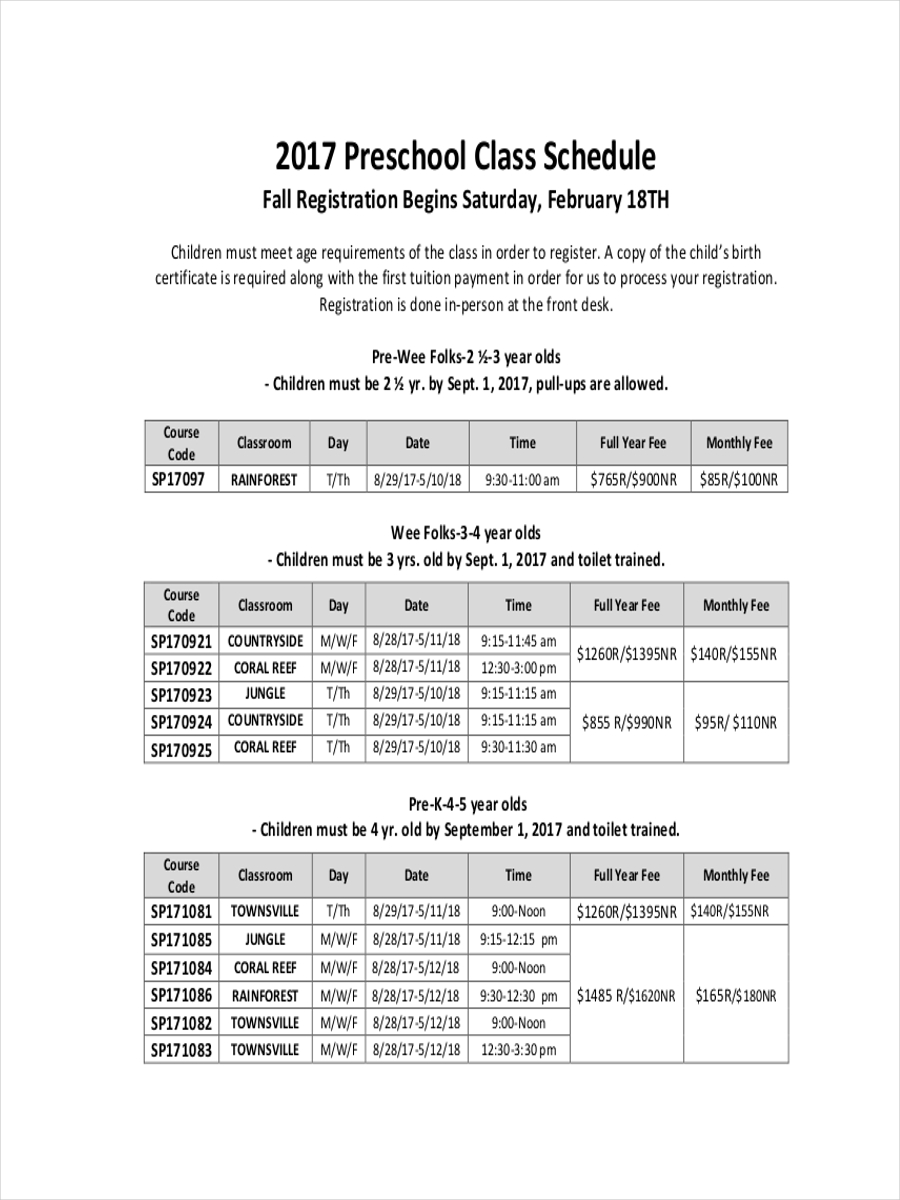

I put the students’ names across the top and the times down the left hand side, like the pictures below. From that, I can then have some ideas about how long group activities should be, how many small group or individual instruction is needed, etc.Įssentially when I set up a schedule I use a grid that has the day broken down into regular increments–usually 15 minutes (the freebie has blank times and 15 minute times set up for you). I use the Teaching Implementation Plan (TIP) for that. I review the students’ IEPs and determine what curriculum we need to use. Steps in Creating the Autism Daily Class ScheduleĮverything in setting up the schedule depends on knowing your students. The best place to start is with the ultimate guide to setting up special education classes.
PRESCHOOL DAILY SCHEDULE TEMPLATE HOW TO
I have a variety of posts that include tons of information about how to set up all types of special education classes. They are all self-contained classrooms with one that also served as a resource classroom.
PRESCHOOL DAILY SCHEDULE TEMPLATE DOWNLOAD
The download includes 5 special education classes’ schedules and cover all ages from preschool through high school. So I wanted to share some examples and go over some main strategies I use in organizing the classroom schedule. Hang it where everyone can see it often, especially while you are establishing the schedule.Sometimes it helps to have examples of autism daily schedules to work from when setting up your own. You can print either of these schedule templates out, and have your kids help create a schedule that works for everyone. Visual reminders help everyone get on the same page. Things will always come up and you may need to adjust, but in general, try to stay with your set schedule. If your schedule changes often, it will be hard for kids to follow along and know what to expect. Once you have established your schedule, try as much as you can to be consistent with following it. Ask your kids to tell you about the schedule, to boost understanding. Involve your kids in making the schedule, and explain how it’s going to work in terms that they’ll understand. There are 2Af things that really help to get your kids on a schedule and establish routines.

Let loose a little! Try to enjoy your time together, simply.Use time when you aren’t working to teach your kids things they can do independently.

Make a plan for when you are working and your kids still need structure.Don’t compare your schedule with others – do what works for your family.Get on the same page with your partner and/or other adult caregivers.Create routines and a schedule, but be flexible.When life is busy, routines can help you feel more organised and in control, which lowers stress.Regular and consistent routines can help you feel like you’re doing a good job as a parent.Routines help you get through your daily tasks and free up time for other things.By taking time to teach and interact with your kids, you can actually use daily routines to help develop and strengthen the bond you share with your family. Routines help you connect with your kids.When you establish a routine for chores and taking care of your household, kids are learning to contribute, work hard, and take care of something outside of themselves. Routines help kids learn skills and responsibility.Social skills, hygiene, work and healthy eating habits are all things kids can learn through good routines.

Routines help kids learn how the world runs, and what they need to do in order to interact successfully in that world. Routines create an environment for learning.This is especially important during times of change or uncertainty. Routines provide kids with a sense of security and stability.Routines have a positive impact on kids and families, particularly in times of uncertainty. Ideas to Include in Your Kids Daily Schedule.


 0 kommentar(er)
0 kommentar(er)
